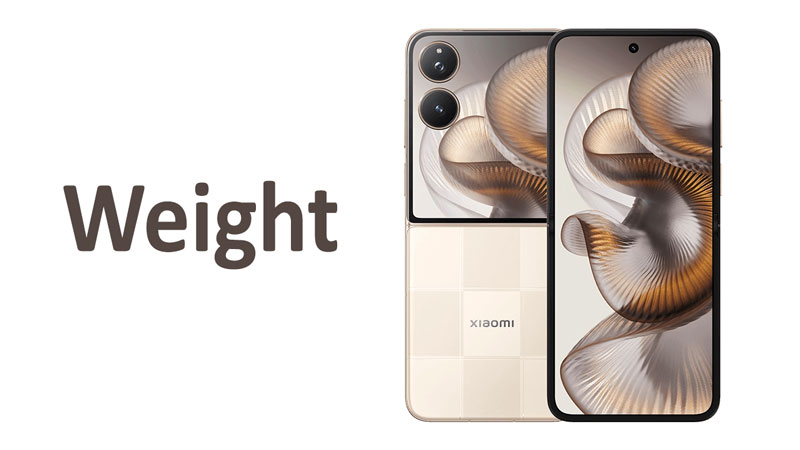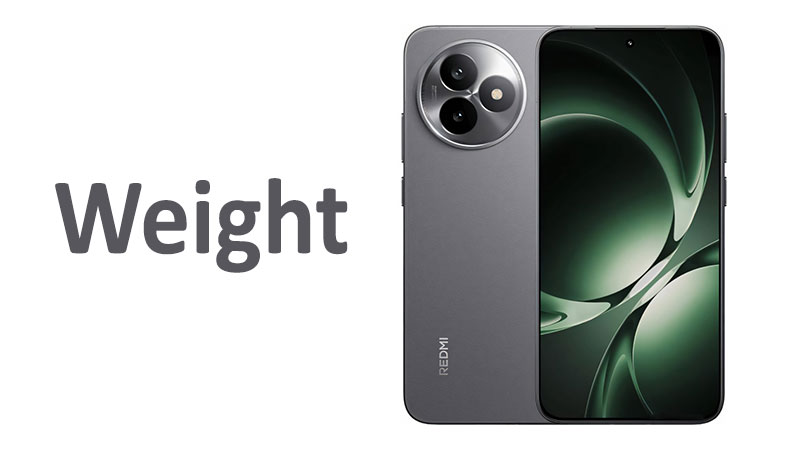In the world of flagship smartphones, every single specification is scrutinized. From the processor speed to the megapixel count, consumers and critics analyze every detail. Yet, one of the most fundamental aspects of a device, which defines our daily interaction with it more than any other, is its physical presence. Central to this is the Google Pixel 10 weight, a metric that dictates ergonomics, comfort, and the perceived quality of the device.
The weight of a smartphone is not just a number on a spec sheet; it is a deliberate engineering choice. It represents a complex balance between battery size, material quality, structural integrity, and advanced camera hardware. With the Google Pixel 10 officially weighing in at 204 grams, it’s crucial to explore what this figure means for the end user. This article provides a comprehensive analysis of the Pixel 10’s weight, comparing it to its predecessors and key competitors, and breaking down what contributes to its mass.
The Official Numbers: Unpacking the Google Pixel 10 Weight
Google has specified the weight for its latest flagship with precision.
Official Weight: 204 g (7.20 oz)
To the average user, 204 grams might seem abstract. To put it into perspective, this is roughly the weight of two decks of playing cards or a large billiard ball. It’s a tangible mass that feels substantial in the hand without being overly burdensome.
The conversion to ounces (7.20 oz) is important for markets where the imperial system is more common. This figure places the Pixel 10 firmly in the premium flagship category, where devices often hover around the 200 gram mark to convey a sense of density and quality.
How the Pixel 10 Weight Compares: A Competitive Analysis
A number is meaningless without context. The significance of the Pixel 10’s 204 gram weight becomes clear only when compared to other devices in the market.
An Evolutionary Step: Pixel 10 vs. Pixel 9
Google’s Pixel line has shown a gradual evolution in design and weight. Let’s assume its predecessor, the Pixel 9, weighed approximately 197 grams. The increase of 7 grams in the Pixel 10 is a minor but noticeable change.
This increase can be attributed to several factors. Google likely incorporated a slightly larger battery to improve endurance, a key demand from users. Furthermore, enhancements to the signature camera bar, including potentially larger sensors or improved lens mechanics, would add to the overall mass. This subtle weight gain is a trade off for meaningful hardware upgrades.
The Flagship Battle: Pixel 10 vs. iPhone 17
The most classic comparison is against Apple‘s latest offering. If we project the iPhone 17 to weigh around 201 grams, the Pixel 10 is marginally heavier. The difference of 3 grams is practically imperceptible to most users.
However, the design philosophy differs. Apple often uses materials like stainless steel or titanium in its Pro models, which have different density characteristics compared to the aluminum frame expected on the standard Pixel 10. The Pixel 10’s weight is more distributed, while the iPhone’s can feel more concentrated, creating a different in-hand sensation despite similar numbers.
The Android Rivalry: Pixel 10 vs. Samsung Galaxy S26
Samsung has consistently prioritized making its Galaxy S series feel surprisingly light for their size. If the Galaxy S26 comes in at around 196 grams, it would be noticeably lighter than the Pixel 10.
This 8 gram difference is where users might start to feel a distinction. Samsung achieves its lower weight through aggressive internal engineering and material choices. For buyers, this presents a clear choice: the lighter, more nimble feel of the Galaxy S26 versus the denser, more substantial presence of the Google Pixel 10.
What Influences the Google Pixel 10’s Weight?
The 204-gram figure is not arbitrary. It is the sum of every component, every screw, and every inch of adhesive inside the device. Here are the primary contributors.
1. The Power Source: Battery Size
The single heaviest component in any modern smartphone is its battery. To achieve all day or multi day battery life, manufacturers must use large lithium-ion cells. A larger capacity, measured in milliamp hours (mAh), directly corresponds to a heavier physical battery. The Pixel 10’s weight suggests it houses a robust battery, likely exceeding 4,800 mAh, ensuring it can power the advanced Tensor processor and brilliant display for extended periods.
2. Materials and Chassis
The choice of materials is critical for both durability and weight. The Pixel 10 is expected to use a recycled aluminum frame, which offers an excellent balance of strength and relatively low weight. The front and back are protected by high end Gorilla Glass. This glass is dense and adds significant weight, but it is essential for scratch resistance and structural integrity. The combination of a metal frame and two glass panels creates the “glass sandwich” design that defines the premium feel and contributes heavily to the 204 gram total.
3. The Camera Bar: A Signature Component
Google’s iconic camera bar is not just a design flourish; it is a housing for some of the most advanced optics in the industry. This module contains multiple lenses, large camera sensors, laser autofocus systems, and a flash. Each of these components has its own mass. The solid construction of the bar, designed to protect the sensitive camera equipment, further adds to the device’s weight and influences its top heavy balance.
4. Display and Internal Components
The size of the display is another factor. A larger screen requires more glass, a bigger backlight panel, and more structural support. Internally, components like the motherboard, advanced cooling systems (such as vapor chambers), and haptic feedback motors all contribute small but cumulative amounts of weight.
Ergonomics and In-Hand Feel: Beyond the Numbers
How a phone feels is about more than just its raw weight. Ergonomics play a vital role in the user experience.
Weight Distribution and Balance
A key aspect of the Pixel 10’s design is its weight distribution. While the camera bar makes the top slightly heavier, Google has engineered the device to have a center of gravity that rests comfortably in the palm. A well-balanced 204gram phone can feel more manageable than a poorly balanced 195 gram phone that constantly feels like it’s about to tip out of your hand.
One-Handed vs. Two-Handed Use
At 204 grams, the Pixel 10 sits on the cusp of comfortable one-handed use for many people. Users with smaller hands may find themselves needing to use two hands to type or reach the top of the screen securely. The weight provides a reassuring stability when typing with two thumbs, but it can lead to slight wrist fatigue during prolonged one-handed use, such as reading an article or scrolling through social media.
Pocketability and Portability
The weight of the Pixel 10 is certainly noticeable in a pocket. In a loose jacket pocket, it is perfectly fine. However, in tighter trousers or shirt pockets, its presence is undeniable. The mass, combined with its physical dimensions, means users will always be aware that it’s there. This isn’t necessarily a negative, as it can prevent one from accidentally leaving it behind.
Pros and Cons of the Google Pixel 10’s Weight
The choice of 204 grams comes with distinct advantages and disadvantages.
Pros
- Premium, Substantial Feel: A heavier phone often feels more expensive and durable. The weight of the Pixel 10 imparts a sense of quality and reassures the user of its solid construction.
- Accommodates a Larger Battery: The mass allows for a larger battery cell, directly translating to better battery life, a universally desired feature.
- Improved Stability: The weight adds a bit of inertia, which can help stabilize the phone when taking photos or recording videos, reducing minor hand-shake.
- Better Heat Dissipation: A larger chassis and more internal mass can sometimes aid in passively dissipating heat generated by the processor during intensive tasks like gaming.
Cons
- Potential for Fatigue: Holding the phone for long periods, whether for reading, gaming, or watching videos, can cause hand and wrist fatigue.
- Less Pocket Friendly: The device’s presence is always felt in a pocket, which may be uncomfortable for some users, especially those who prefer a minimalist carry.
- Increased Drop Impact: A heavier object generates more force upon impact. While built to be durable, a drop from a significant height could be more damaging for a heavier phone.
- May Be Too Heavy for Some Users: For individuals accustomed to lighter, smaller devices, the 204 gram weight of the Pixel 10 could be a significant and unwelcome adjustment.
Important Considerations for Potential Buyers
If you are considering the Google Pixel 10, here are some points related to its weight that you should keep in mind.
- Visit a Store: The best way to understand if 204 grams is right for you is to experience it firsthand. Try to hold a Pixel 10 or a similarly weighted phone (200−210 grams) at an electronics store. See how it feels in your hand and in your pocket.
- Consider Your Usage: Are you a power user who will be gaming for hours, or do you primarily use your phone for quick texts and calls? Heavy, prolonged use can make the weight more of a factor.
- Factor in a Case: Most people use a protective case, which will add more weight and bulk to the phone. A slim silicone case might add 20−30 grams, while a rugged, heavy-duty case could add 50 grams or more, pushing the total weight past 250 grams.
- Personal Preference is Key: There is no “perfect” weight for a smartphone. It comes down to what feels right for you. Some people prefer the reassuring heft of a heavy device, while others prioritize a lightweight, almost-not-there feeling.
Conclusion: Finding the Perfect Balance
The Google Pixel 10 weight of 204 grams (7.20 ounces) is a carefully considered decision by Google’s engineers. It is a testament to the phone’s premium build, its large battery, and its powerful camera system. This weight positions the Pixel 10 as a substantial, high quality flagship device that feels secure and valuable in the hand.
However, this substantial feel comes with trade offs in portability and long term comfort for some users. It is slightly heavier than some of its direct competitors, a factor that could sway buyers who prioritize a lightweight experience.
Ultimately, the decision of whether the Pixel 10 is too heavy, too light, or just right is a personal one. By understanding the context, the contributing factors, and the ergonomic implications of its 204 gram mass, you can make an informed choice about whether this impressive piece of technology is the right fit for your daily life.
FAQ
How much does the Google Pixel 10 weigh exactly?
The official weight of the Google Pixel 10 is 204 grams, which is equivalent to 7.20 ounces.
Is the Google Pixel 10 considered a heavy phone?
Yes, at 204 grams, the Pixel 10 is in the upper middle range for flagship smartphones. While not the heaviest on the market, it is considered a substantial device and is heavier than many of its competitors.
How does the Pixel 10 weight compare to the Pixel 9?
The Pixel 10 is slightly heavier than its predecessor. The increase of approximately 7 grams from the Pixel 9 is likely due to a larger battery and upgraded camera hardware.
What are the main components that contribute to the Pixel 10’s weight?
The primary contributors to the Pixel 10’s 204 gram weight are its large battery, the glass and aluminum construction, and the comprehensive camera module housed in the signature camera bar.
Does the weight of the Pixel 10 make it uncomfortable to use?
This is subjective and depends on the user. The weight provides a premium feel but can cause fatigue during extended one-handed use. It is recommended to hold the device in a store to see if the weight is comfortable for you.


